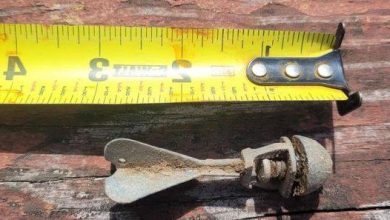The Evolution of Washing Machines: A Look at the Iconic Wringer Washer

ADVERTISEMENT
The Evolution of Washing Machines: A Look at the Iconic Wringer Washer
The image you’ve shared is a classic example of a vintage wringer washer, a staple in many households during the mid-20th century. This piece of machinery represents a significant step in the evolution of domestic technology, illustrating how far we’ve come in the realm of household appliances.
The Origins and Design of the Wringer Washer
Wringer washers first gained popularity in the early 1900s, providing a more efficient alternative to hand washing clothes. The design was simple yet effective: a large tub for washing, an agitator to move the clothes through the water, and a wringer mechanism to squeeze excess water out of the clothes before they were hung to dry.
The washing process involved filling the tub with water, adding soap, and manually turning on the machine, which would then agitate the clothes. After the washing cycle, clothes were fed through the wringer, a pair of rollers that squeezed out the water, making them easier to dry. This design was a significant innovation at the time, reducing the physical labor involved in doing laundry.
The Cultural Significance of the Wringer Washer
The wringer washer became a symbol of the post-war domestic life, particularly in the 1940s and 1950s. For many families, owning a wringer washer was a sign of modernity and convenience. It allowed households to manage laundry more efficiently, which was particularly important in an era when washing machines were still a luxury item.
Despite its popularity, the wringer washer required a considerable amount of manual effort and caution. Users had to be careful when feeding clothes through the wringer, as the powerful rollers could easily cause injury if fingers or loose clothing got caught. Despite these challenges, the wringer washer was a beloved appliance, remembered fondly by those who used it.
ADVERTISEMENT
The Transition to Modern Washing Machines
The introduction of fully automatic washing machines in the late 1950s and 1960s marked the beginning of the end for the wringer washer. These new machines offered greater convenience, with features like built-in spin cycles, timers, and eventually, automatic water filling and draining. As technology progressed, the wringer washer was gradually phased out, becoming a nostalgic relic of a bygone era.
Today, the wringer washer is often seen as a collector’s item, a piece of history that represents the ingenuity and resourcefulness of earlier generations. While it may seem primitive compared to modern appliances, the wringer washer played a crucial role in the development of the washing machines we rely on today.
Conclusion
The wringer washer is more than just a piece of machinery; it is a testament to the evolution of household technology and the ways in which it has shaped domestic life. From its innovative design to its cultural impact, the wringer washer remains an iconic symbol of a time when doing laundry was a much more hands-on process. As we look back at this piece of history, we can appreciate the convenience of our modern appliances and the incredible journey of technological advancement that has brought us here.




